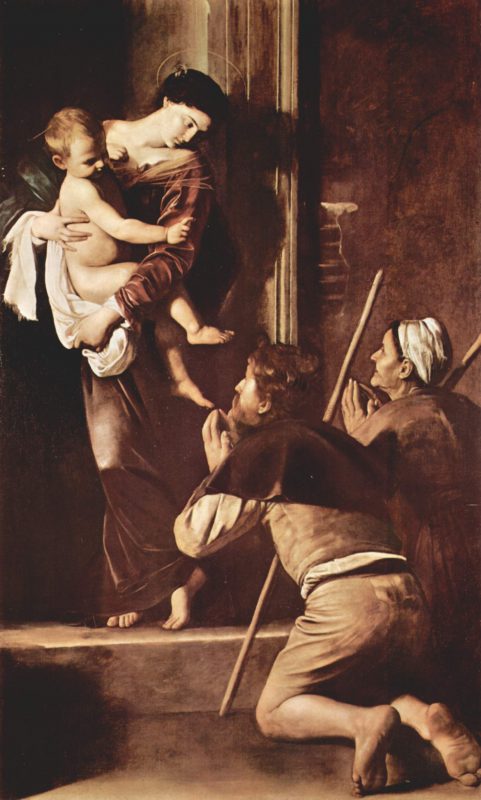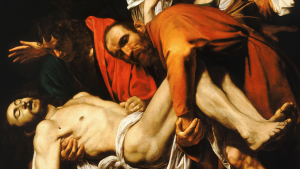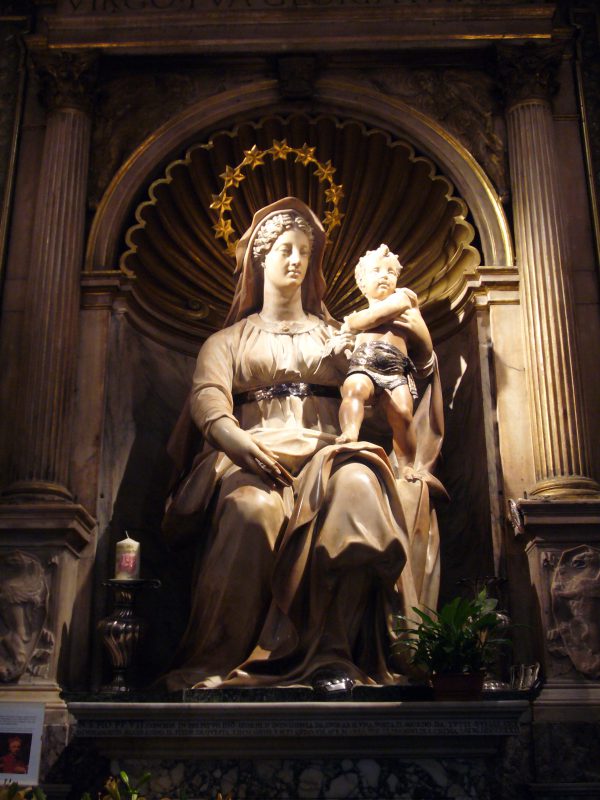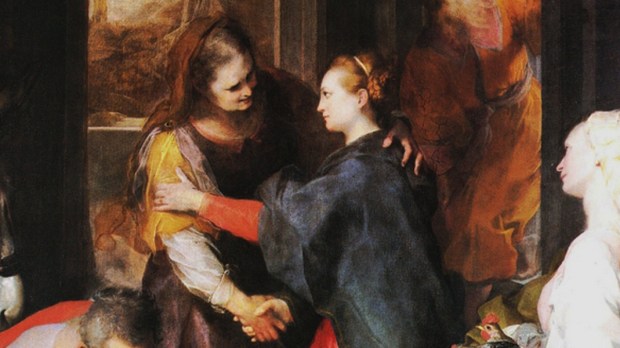Lenten Campaign 2025
This content is free of charge, as are all our articles.
Support us with a donation that is tax-deductible and enable us to continue to reach millions of readers.
Is there anything more compelling than a journey made for love? A surprise visit home for holidays, a suitor arriving out of the blue on bended knee, Odysseus struggling nine long years to return to Penelope—these capture the imagination and warm the heart. Pilgrimage is the ultimate journey of love, at the cost of time, expense and inevitable discomfort. While many religions promoted pilgrimage, Christians gave it a special stamp of their own. From the moment Jesus exhorted his apostles to “Go and make disciples of all nations” (Mt 28:19), Christians have traveled the world not only to spread the Gospel but also to visit the sites where the story of salvation unfolded and where great saints bore witness to Truth.
The hardship of pilgrimage—long treks on foot, danger of disease, and the threat of brigands—made the activity a popular penance, a true gesture of atonement in making a journey for the love of Christ.
During the Reformation, however, the practice of pilgrimage was called into question by Martin Luther, who scoffed that pilgrims were rarely motivated for the “right” reasons.
Those who make pilgrimages do so for many reasons, very seldom for legitimate ones. The first reason for making pilgrimages is the most common of all, namely, the curiosity to see and hear strange and unknown things. This levity proceeds from a loathing for and boredom with the worship services, which have been neglected in the pilgrims’ own church.
The Catholic Church championed the tradition of pilgrimage in the final session of the Council of Trent and after a long period of diminished visitors to Rome, the Holy Years began to see the streets once again swell with pilgrims. In 1550, St. Philip Neri opened a hospice for pilgrims, which would became the church of Trinità dei Pellegrini, where he and his volunteers cared for no fewer than 140,000 pilgrims in 1575. St. Philip also began a tradition for locals to make a pilgrimage to seven churches throughout the city of Rome, a custom that lives on to this day.
Read more:
How Saint Philip Neri Anticipated Pope Francis by 500 Years
One of Philip Neri’s favorite paintings, a stone’s throw from his tomb in Chiesa Nuova, represents a very special pilgrimage. Federico Barocci’s Visitation, painted in 1586, shows Mary hurrying to Elizabeth immediately after Gabriel tells her she will become the Mother of God. Elizabeth, too, is pregnant with John the Baptist and Mary races to bring divine love to her cousin.

Barocci entices the viewer into the story with the leaning figure of Joseph reaching to pull up an opaque sack filled with bread and a metal ewer of wine. It appears that he is gathering these gifts from the liturgical space of the altar. On the right, a servant girl in a fetching color combination of lemon yellow, rose and olive green, climbs the stair holding a gift of two birds. Her straw hat and the woven basket have a high definition quality that makes the scene appear crisply real.
Mary, a glorious example of humility, climbs the stairs towards her cousin who waits in an archway as Zechariah leans in from the semi darkness. Barocci’s strength was always color, able to both delight and awaken the senses. Mary is accompanied by bright shades as she brings the Light into the world, but where Elizabeth lives, there is merely murky darkness. As Mary touches Elizabeth’s arm, the first splash of brilliant hues spreads along the sleeve, as “the baby leaped in her womb, and Elizabeth was filled with the Holy Spirit” (Lk 1:41). The joyful color that Barocci infused in the painting deeply affected St. Philip, who experienced one of his visions before the work.
The Jubilee Year 1600 was expected to be particularly successful with an estimated half a million people coming to the Eternal City. Pope Clement VIII, amid his many preparations, made a personal pilgrimage to the Holy House of Loreto, believed to be the site of the Annunciation. In one journey, he both affirmed the value of pilgrimage and underscored the church’s abiding confidence in the intercession of the Blessed Virgin Mary.
In 1602, Caravaggio was commissioned by Ermete Cavaletti, himself a volunteer at Trinità dei Pellegrini, to paint the Madonna of Loreto, also known as Madonna of the Pilgrims. This startling painting bore none of the charming color of Barocci but greeted visitors to the Church of Sant’Agostino with two pilgrims in threadbare clothes, projecting dirty bare feet towards the viewer. Soiled trousers, callouses and a hefty gluteus maximus still take tourists by surprise as the first image one sees when entering the chapel on the left.

But as any footsore traveler can tell you, in Rome legs are the most reliable form of conveyance. In this picture, after hundreds of miles, the man and woman can finally park their “cars,” sinking down and remaining still at their destination. The walking sticks, however, separate the faces from the ungainly bodies, and those expressions tell a very different story. Caravaggio only reveals a tantalizing sliver of their faces, but the woman breaks into an apple-cheeked grin, her wrinkles emanating like rays of light. In the man’s face, all lines disappear in the bright light, which emphasizes the wide-open eyes that seem to grow in astonishment. Whatever they have come to see, they have found it.
It is clearly not the building, painted with peeling plaster revealing cheap brick and nicks in the stone doorway; they have journeyed out of love and they have found love waiting for them. Caravaggio hints that the Madonna and Child before them is an apparition; the hefty child could not possibly be held by Mary resting lightly on the tips of her toes, and Mary’s robe shimmers like silk and velvet, a brief mystical moment amid the heaviness of everyday existence.

Read more:
When art came to the Eucharist’s rescue: Caravaggio, Domenichino, and Barocci
This joyful composition leaves, nonetheless, an unsettling feeling: it appears to form a triangle – Mary at the apex, the pilgrims to the right and a gaping space to the left by the entrance door. This space seems to be reserved for us, who are perhaps coming to see the work for its fame rather than its content. These viewers—the curious or the superficial who have “come to see strange and unknown things”—see Jesus’ face in shadow, and are left with a longing to be brought into the privileged position of the poor pilgrims. They may be unkempt and uncouth, yet in their simple faith, Mary leans dramatically towards them forming a bridge to her Son.
The work sparked outrage among many visitors, and the claims of lack of decorum were championed by Caravaggio’s rival painters and detractors, along with the rumor that the model for the Virgin Mary had been a girlfriend of Caravaggio’s: Lena, “who stood in Piazza Navona,” a euphemism for a prostitute. But it doesn’t take much to see where the model actually came from, since the straight lines of the face, the thick wavy hair parted in the center are the defining features of the statue of Our Lady of Safe Delivery carved by Jacopo Sansovino in 1520, placed just 10 yards away.

It is hard to look one’s best externally during a pilgrimage—indeed lost luggage, food sickness, and inability to communicate with locals are all part of the humiliations that one undergoes during these journeys—but Caravaggio sought to express that while doing nothing for our outer appearance, pilgrimage helps us to shine more brightly within.

